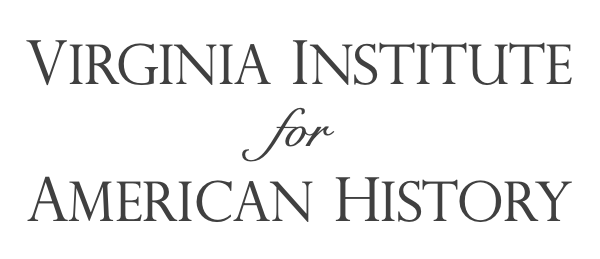By: Tony Williams
On
September 17, 1787,
at the conclusion of the Constitutional Convention in the Philadelphia statehouse, Benjamin Franklin
pointed at the president’s chair which was painted with a half a sun on
it. He told his fellow delegates: “I
have . . . often in the course of the session . . . looked at that behind the
President without being able to tell whether it was rising or setting. But now at length I have the happiness to
know that it is a rising and not a setting sun.” The delegates then retired to the City Tavern
for a farewell dinner and “took a cordial leave of each other,” as George Washington
wrote in his diary.[1]
Two
days later, the Pennsylvania Packet
and five other Philadelphia
newspapers printed the Constitution.
Within three weeks, dozens of others across the country would submit the
document to the American people for their consideration. On September 28, Congress voted to send the
handiwork of the Philadelphia Convention to the state legislatures to elect
representatives to popular ratifying conventions.
The ratification
of the Constitution was to be an expression of popular sovereignty as the
people’s representatives would deliberate on the merits of the new government
in popular conventions rather than state legislatures. The Constitution would be accepted as
fundamental law if accepted by nine of the thirteen states rather than the
unanimity of the Articles of Confederation.
This method of ratification would additionally preserve the principle of
federalism as several devices in the Constitution sought to preserve a balanced
sovereignty between the national government and the states.
By the end of
September, Franklin’s
sanguine expectations seemed to be confirmed.
But, in October, the opponents of the Constitution rallied and published
their criticisms in newspapers in different states. The Pennsylvanian Independent Gazetteer published an article by “Centinel,” who
warned the new government was the “most daring attempt to establish a despotic
aristocracy among freemen, that the world has ever witnessed.” The author was also deeply concerned that the
document lacked a bill of rights that would secure such essential rights as
liberty of the press.[2] “Brutus,” meanwhile, in New York, warned that the new government
would have unlimited power of taxation, which would destroy state government
and act as “the great engine of oppression and tyranny.”[3] These opponents of the Constitution were
labeled “Anti-Federalists” though they believed they stood for a truly federal
system rather than a consolidated one and were the true federalists.
In
mid-October, Alexander Hamilton conceived of a series of essays in defense of
the Constitution from its detractors on his journey from Albany
to New York
as he returned home from a session of the state supreme court. When he arrived home, Hamilton
consulted several friends about joining him in his project and John Jay and
James Madison, who was in New York serving in
the confederation congress, accepted Hamilton’s
invitation.
On October 27,
the New York
Independent Journal published Hamilton’s first Federalist essay written under the
pseudonym “Publius.” Although addressed
to the people of New York, Hamilton originally intended the essays to
influence the ratification of the Constitution at the New York Ratifying
Convention where he expected significant opposition among Anti-Federalists. To put it in relatively crude modern terms,
it was meant to be a piece of political propaganda persuading the Anti-Federalists
to ratify the Constitution.
The
Philadelphia Convention, The Federalist,
Anti-Federalist essays, and ratifying conventions, in addition to the informal
debates in taverns among ordinary farmers, artisans, and merchants were all
part of an unprecedented and incredible moment of reflective deliberation in
world history. The people and their
representatives understood the significance of their debate on the principles
of republican self-government for their country and their posterity.
Hamilton certainly realized
the import of the American debate for countries around the world. In a statement of American exceptionalism in
the tradition of John Winthrop’s “City Upon a Hill,” Hamilton wrote in the very first Federalist essay:
It seems to have
been reserved to the people of this country, by their conduct and example, to
decide the important question, whether societies of men are really capable or
not of establishing good government from reflection and choice, or whether they are forever destined to depend upon
their political constitutions on accident and force.[4]
Hamilton thought that if creating a
republican government by consent failed under such propitious conditions during
the American founding, that perhaps mankind was not meant to govern
itself.
From October,
1787 to May, 1788, the triumvirate writing as Publius penned a total of
eighty-five essays. They were reprinted
in other states and eventually bound in book form and shipped to states with
particularly narrow support for the Constitution. Madison himself ordered several copies to
distribute to the delegates at the Virginia Ratification Convention to persuade
them to support the new government.
********************
This essay is
the first in a series of essays on The
Federalist and its principles by WJMI Program Director, Tony Williams, as
part of our September teacher seminar on the Constitution, celebrating its 235th
anniversary. Having laid down the
historical context for its composition, subsequent essays will explore the
principles of government that it espoused in the defense of the new
Constitution. Thus, the essays will
answer the question why Thomas Jefferson and the University of Virginia
Board of Visitors included The Federalist, along with the Declaration of Independence and
George Washington’s Farewell Address, as the essential works for a proper
understanding of the Constitution and an inculcation in the principles of
American government in a true civic education.
[1] Quoted
in, Tony Williams, America’s Beginnings:
The Dramatic Events that Shaped a Nation’s Character (Lanham, MD:
Rowman Littlefield, 2010), 161.
[2] Quoted
in, Pauline Maier, Ratification: The
People Debate the Constitution, 1787-1788 (New York: Simon and Schuster, 2010),
76.
[3] Brutus, October 18, 1787, http://teachingamericanhistory.org/library/index.asp?document=849.
[4]
Alexander Hamilton, Federalist #1,
Charles R. Kesler and Clinton
Rossiter, eds., The Federalist Papers
(New York: Penguin, 1999), 27.


No comments:
Post a Comment